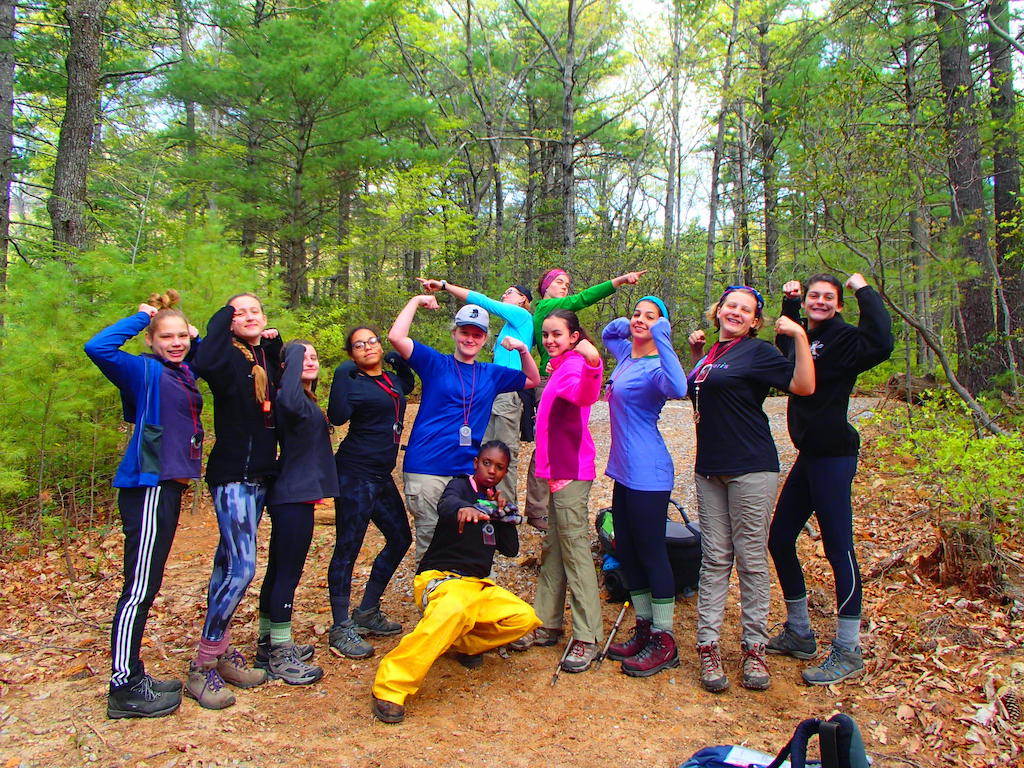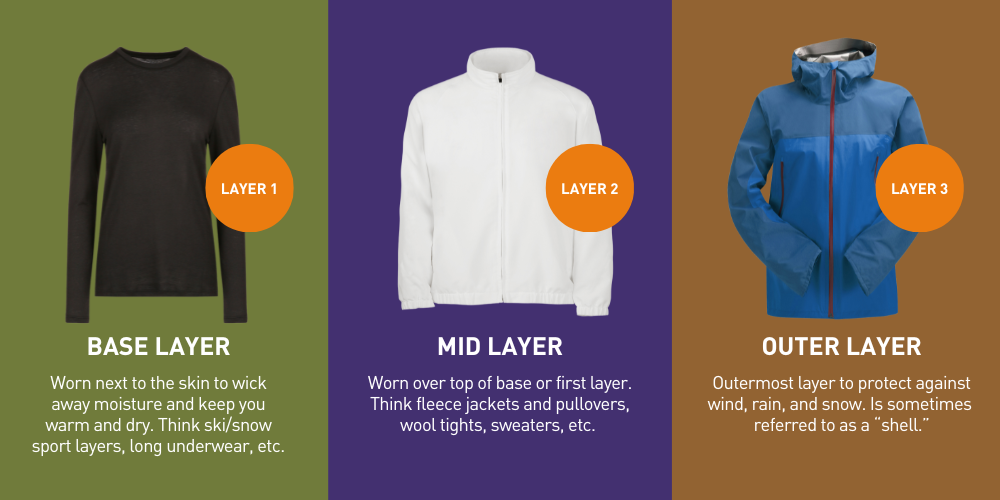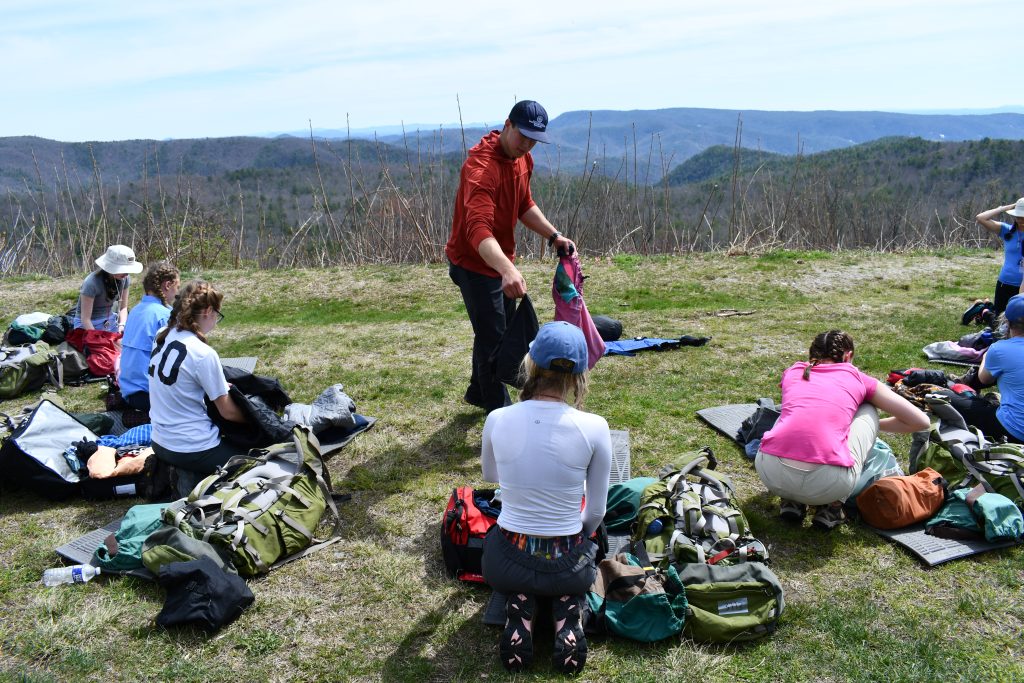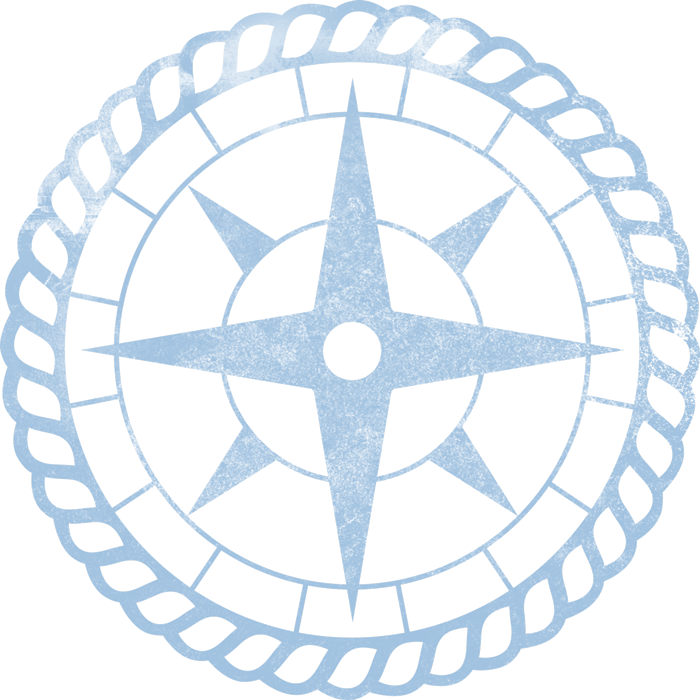
When you sign up for Outward Bound, you will receive a packing list of items to bring with you on course. Outward Bound will provide you with many of the bigger items, such as sleeping bags, backpacks, water bottles, food, cooking equipment, and shelter, but we require you to bring your own clothing items.
Our packing list is the result of countless hours in the backcountry and experience derived from instructors and alums. By thoughtfully selecting specific fabrics/textiles (many of which you probably already have) and strategic layering, you’ll be well on your way to tackling anything your expedition throws at you.
If you have difficulty obtaining items from the packing list at any point, please get in touch with your Student Services Representative for support.
FABRICS/TEXTILES
First things first: the type of fabric you layer with is as important as how you layer, so let’s break down the fabrics you should look for when going through the packing list.
Here’s an example of a garment tag for a piece of clothing that would work great on Outward Bound:

These fabrics get a thumbs up; your layer(s) may be 100% of a single type of fabric or a blend of the following:
- Polyester
- Acrylic
- Rayon
- Nylon
- Wool / Merino Wool
- Polypropylene
- Fleece
- Spandex
- Name brands like Polartec™, Thinsulate™, COOLMAX®, Smartwool, GORE-TEX, and Capilene
You may come across other types of fabrics/textile blends that are not mentioned above; please reach out to your Student Services Representative to determine if an item is suitable for your course.
Cotton clothing and cotton blends are NOT PERMITTED (unless otherwise noted) and are not good options for items on your packing list. Cotton loses its insulating properties when it gets wet and does not dry quickly.
FINDING ITEMS
You may already have suitable options in your own closet. You can also check with your friends, local thrift stores, big box stores or neighborhood retailers.
PRO TIPS
- Athletic, fitness, and ski/snow sport layers are made from these fabrics and are great options.
- Aim for loose-fitting, lighter-colored clothing to keep you cool and avoid attracting biting insects.
Now that we know what we’re looking for let’s discuss how it all comes together to keep you cool, warm, and dry, no matter the weather.
LAYERING
Your packing list is meant to help you meet the various conditions you’ll face on Outward Bound head on. Beyond making sure you are using the right materials, we also use the Layering Principle. This technique allows you to adapt to changing weather and exertion by managing moisture and temperature.

For example, on a cool, rainy day on course, you might dress in a long-sleeved shirt (base layer), fleece pullover (mid-layer), and a rain jacket (outer layer.) As the weather breaks and you begin hiking, you’ll warm up and be able to easily shed your layers without having to change your clothes fully.
DUFFEL SHUFFLE
Feeling overwhelmed about how it all comes together? Don’t worry! When you arrive, your instructors will guide you through an unpacking and repacking process we call “duffel shuffle” that includes:
- Issuing of Outward Bound equipment you will use during course, including your backpack and sleeping gear.
- Assessing the clothing and gear you brought from the packing list, keeping in mind the course route and the weather forecast.
- Stowing any personal items not needed on course such as travel clothes, cell phones, electronic devices, and wallets, back into your travel luggage. That luggage then gets transported to our facility and placed in locked storage until after course. Please leave expensive and valuable items at home!
PRO TIP
Save the tags from new purchases so you can return any unused items after course.

For more tips and tricks on how to pack for Outward Bound without breaking the bank, watch our video HERE, and don’t forget to reach out to your Student Services Representative directly if you still have questions or trouble finding items on your list.


